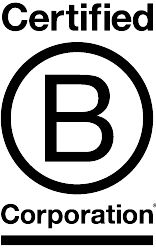
Making It Personal: Design For One Earth Becomes Design 2 Thrive
As RNL celebrates its 60th anniversary, we are looking back at past achievements as well as forward to our next innovations. In 2010, RNL published ‘Design For One Earth’, a call to action internally and to the broader A&D community to consider the simple, yet crucial question: What would it take to live within the natural resource capacity of one earth? (Because as humans, we certainly weren’t and aren’t doing a great job at living within our resource means.)
Comprising 12 guiding principles ranging from carbon and water to beauty and prosperity, Design for One Earth became RNL’s framework for applying sustainability best practices into every project, no matter the scale or goals.
Since that time, the nature and meaning of sustainable design have evolved. Three key trends, however, have emerged as game-changers for planning and design:
- It’s All Connected: There is a growing awareness of the connection between energy efficiency, clean energy sources, mobility infrastructure, and our public health crisis.
- Design Influences Wellbeing: There is recognition of the importance of, and significant business case for, leveraging the power of design to influence human health and wellbeing – from material choices to access to quality air and daylight to incorporating opportunities for active lifestyles in our buildings and communities.
- The Need for Resiliency is Growing: There’s an increasing urgency in the need for greater resiliency – the ability to not only withstand stresses and shocks, but to grow stronger as a result – in our buildings, infrastructure, and communities.
In a nutshell: While sustainability is still ultimately a global issue, it’s also become much more personal, affecting us everywhere from the office workstation to the bus stop to the community power plant.
And when viewed in that lens, we no longer believe the idea of sustaining is enough. We want to aim higher, strive for a future that is brighter, stronger, and more resilient.
We want to thrive.
The original 12 Design for One Earth principles were visionary for their holistic approach to sustainability, encompassing many of the topics that are only now entering the playbook of mainstream architecture. The principles are as much a part of our value system, and continue to be, as they have been not only since 2010, but since our founding in 1956.
Moving forward, however, we felt the need to re-frame them in a way that is more scalable and relatable to both an individual and a community.
Design for One Earth is now Design 2 Thrive. Same values, different vision of our shared future.

